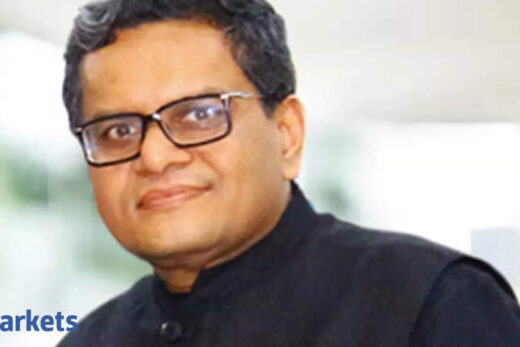But the current market structure doesn’t allow traders to be complacent. In this edition of Tweet Buster, we scan the world of 280 characters to bring out investing gems, market strategies, the dos and don’ts in a bull market.
Globetrotter
When you invest in a global fund and compare expenses across funds, remember that total cost includes, offshore fund cost plus what local AMC charges. “Many 3rd party websites don’t include underlying fund costs,” Radhika Gupta of Mutual Fund said.
When you invest in a global fund, and compare expenses across funds:
1. Compare 🍎 to 🍎: Total cost includes offshore fund cost plus what local AMC charges.
2. Get this data from the AMC website. Many 3rd party websites don’t include underlying fund costs.
1/3
— Radhika Gupta (@iRadhikaGupta) June 22, 2021
For Newbies
Gupta advised first-time investors to stay away from mid/small caps, high-yield products, global funds, cryptocurrency, exotic commodities, closed-ended funds, and structured products. “A baby’s first meals are usually khichdi and mashed bananas for a reason,” she said.
These should not be your FIRST investment:
– Mid/small caps
– High yield
– Global funds
– Crypto
– Exotic commodities
– Closed ended funds
– Structured productsA baby’s first meals are usually khichdi and mashed bananas for a reason.
— Radhika Gupta (@iRadhikaGupta) June 24, 2021
Gupta said an equity savings fund is the first step to equity. “An equal combo of debt, arbitrage and equity, that works in this market for even 2-3 year time horizons,” she said.
ESF = FSE
Equity savings funds are a first step to equity. An equal combo of debt, arbitrage and equity, that works in this market for even 2-3 year time horizons. pic.twitter.com/QLscbWbqBF
— Radhika Gupta (@iRadhikaGupta) June 24, 2021
Think before you invest
In this long thread, Gupta released a list of 10 questions that every investor must ask before investing in any financial product in this bull market.
1. Am I buying this product because everyone else is buying it? Fundamentally, remember, you don’t create alpha by buying what everyone else is buying at a price similar or higher than them.
— Radhika Gupta (@iRadhikaGupta) June 23, 2021
2. Am I buying a debt product that will give me significantly higher returns than the risk free rate? With consistency or guarantees? Immediate red flag. Free lunches don’t exist in finance. Returns greater than the risk free rate, don’t come risk free.
— Radhika Gupta (@iRadhikaGupta) June 23, 2021
3. Do I know in what circumstances this product will make money, and why it will do so? Has that happened in the past? I can’t emphasize enough the importance of looking at rolling returns carefully to have realistic return expectations.
— Radhika Gupta (@iRadhikaGupta) June 23, 2021
4. Do I know in what circumstances this product will lose money, and why it will do so? When has it lost money in the past, especially extreme money? Do these times mirror times like this?
— Radhika Gupta (@iRadhikaGupta) June 23, 2021
4. Do I know in what circumstances this product will lose money, and why it will do so? When has it lost money in the past, especially extreme money? Do these times mirror times like this?
— Radhika Gupta (@iRadhikaGupta) June 23, 2021
4. Do I know in what circumstances this product will lose money, and why it will do so? When has it lost money in the past, especially extreme money? Do these times mirror times like this?
— Radhika Gupta (@iRadhikaGupta) June 23, 2021
4. Do I know in what circumstances this product will lose money, and why it will do so? When has it lost money in the past, especially extreme money? Do these times mirror times like this?
— Radhika Gupta (@iRadhikaGupta) June 23, 2021
4. Do I know in what circumstances this product will lose money, and why it will do so? When has it lost money in the past, especially extreme money? Do these times mirror times like this?
— Radhika Gupta (@iRadhikaGupta) June 23, 2021
4. Do I know in what circumstances this product will lose money, and why it will do so? When has it lost money in the past, especially extreme money? Do these times mirror times like this?
— Radhika Gupta (@iRadhikaGupta) June 23, 2021
The Average Guy
Behavioural finance expert and author Morgan Housel says that average returns for an above-average period lead to extreme outperformance. “It’s the most obvious secret in investing.”
Average returns for an above-average period of time = extreme outperformance.
It’s the most obvious secret in investing.
— Morgan Housel (@morganhousel) June 22, 2021
Potholes to avoid
PMS fund manager Basant Maheshwari said in the long term it is always fundamentals that have to show in the price charts because you can’t be the only smart Charlie in town. “A metal stock that’s very hot on Twitter has terrible fundamentals but chartists are lapping it up because it is ‘metal’. That’s the pothole to avoid.”
Long term it’s always fundamentals which have to show in the price (charts) because you can’t be the only smart Charlie in town. A metal stock that’s very hot on Twitter has terrible fundamentals but chartists are lapping it up because it is ‘metal’. That’s the pothole to avoid. https://t.co/79gCmJKDgd
— Basant Maheshwari (@BMTheEquityDesk) June 27, 2021
Rally to grow bigger?
Maheshwari said Nifty derivative and participation data suggests (unless there is specific bad news) a big rally is in the offing in the coming few days.
Nifty derivative and participation data suggests (unless there is a specific bad news) a big rally is in the offing in the coming few days ? Kya bolte ho aap log ?
— Basant Maheshwari (@BMTheEquityDesk) June 24, 2021
Microcap Investing
PMS fund manager Shyam Sekhar said putting big money into a microcap stock is tough. “You must be lucky to buy enough. The idea must be rightly poised. Even after you bet big, there still is an exit risk. Taking money out is doubly tougher. Microcap investing comes with entry & exit risks.”
Putting big money into a #microcap stock.
Betting big on an idea is tough.
You must be lucky to buy enough.
The idea must be rightly poised.
Even after you bet big, there still is an exit risk.
Taking money out is doubly tougher.
Microcap investing comes with entry & exit risks.— Shyam Sekhar (@shyamsek) June 22, 2021


